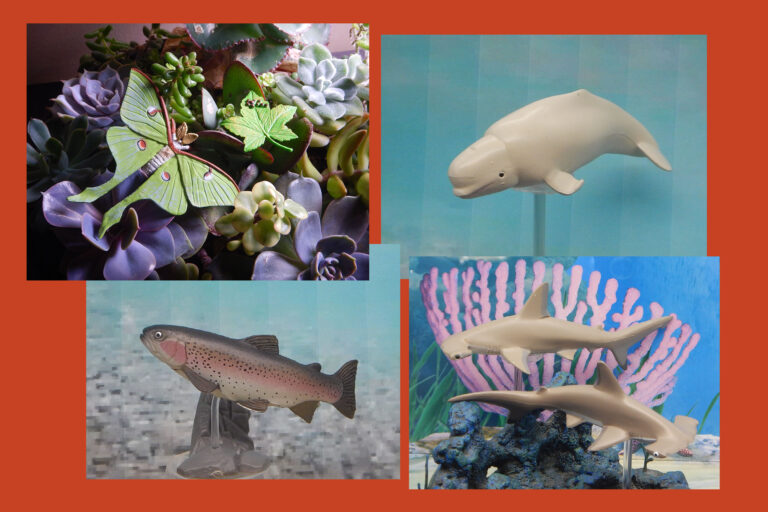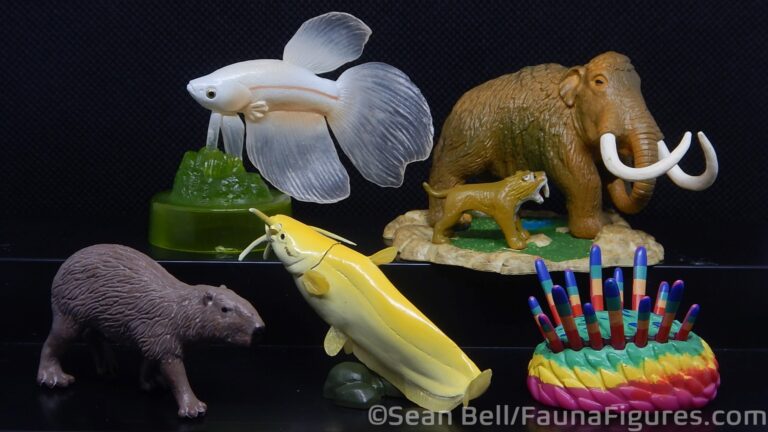
This post is going to go back to the Colorata figures well (I do have a lot of them). This time, it’s another figure from the Saltwater Fishes box set, a Japanese Pilchard. Clearly this was a set that was influenced by species commonly encountered in some way–for the pilchard (and other, related sardines) that would of course be as a food animal. But at least this figure celebrates the living animal! As with the marlin I discussed, this figure is from the original 2009~ish box, and is still available in the revised form now.
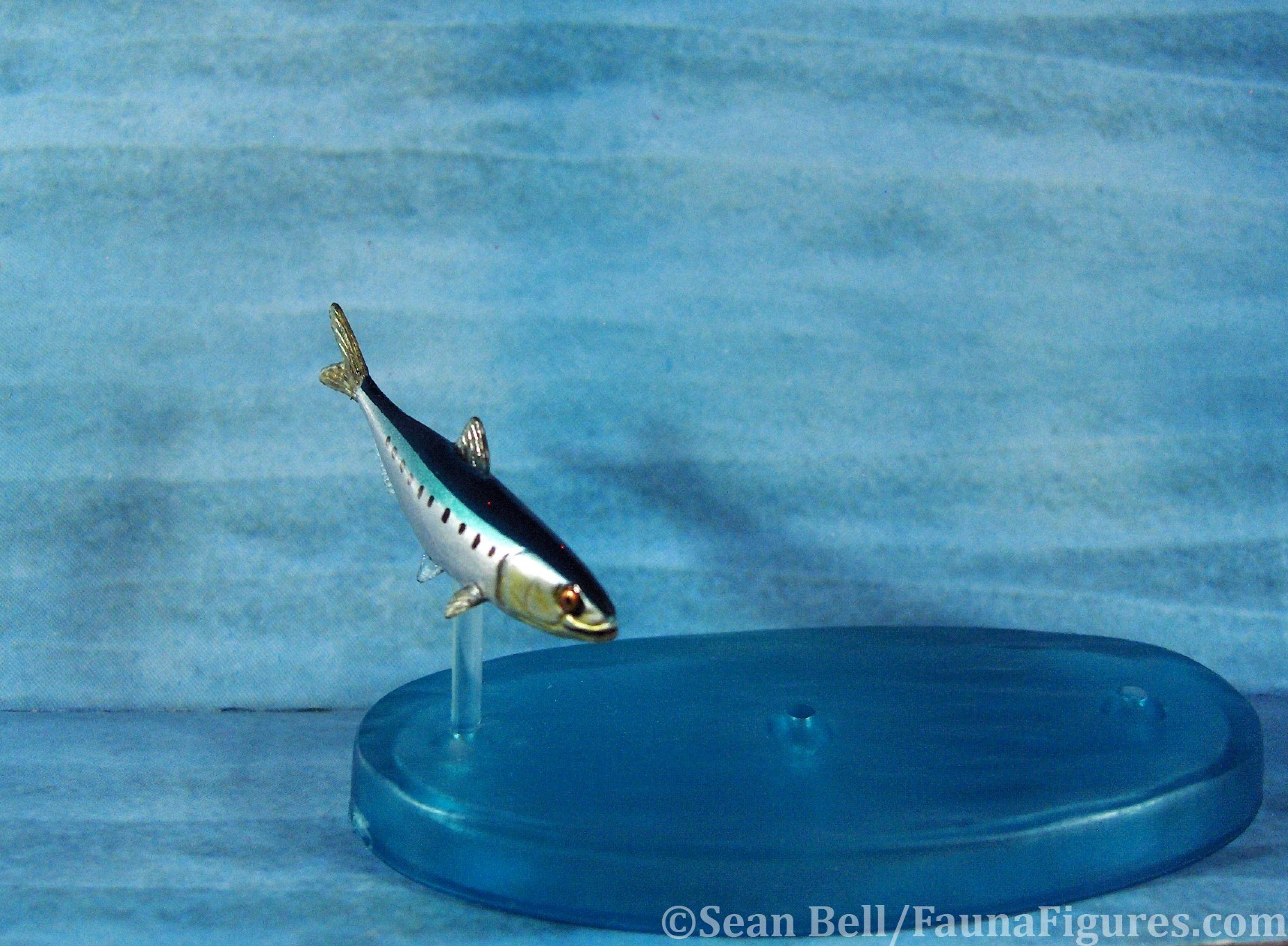
As I mentioned before, I was able to get many Colorata figures through contacts in and near Japan. This one was of course part of the Saltwater Fishes box that I was able to get. While a pilchard may not have been my primary focus in getting the set (I generally collect fish that would be described as ‘unusual’, ‘primitive’ or freshwater) but having the whole set is great, and of course adds on with the rest of the Colorata fishes on a shelf. Plus, as I wasn’t familiar with it, having the figure makes me learn a little bit about the real animal–to me, one of the unsung but important aspects of toy animals.

The figure itself is of course very well done. Even at the size, they made sure that the variable colour along the body is present, and the fins are are a translucent gold, just like the real fish. The figure is pretty small, about 4cm long to give a scale of 1:5 or so. Overall the sets are broadly to scale or at least try to reflect the big versus the small in the set. If we’re being picky, the set is not exactly to scale though. Unlike the marlin, this figure is a single piece, with no detachable fins. This was generally a function of the size of the figures in the box–the largest fish with the largest fins tended to have them separate from the main body.
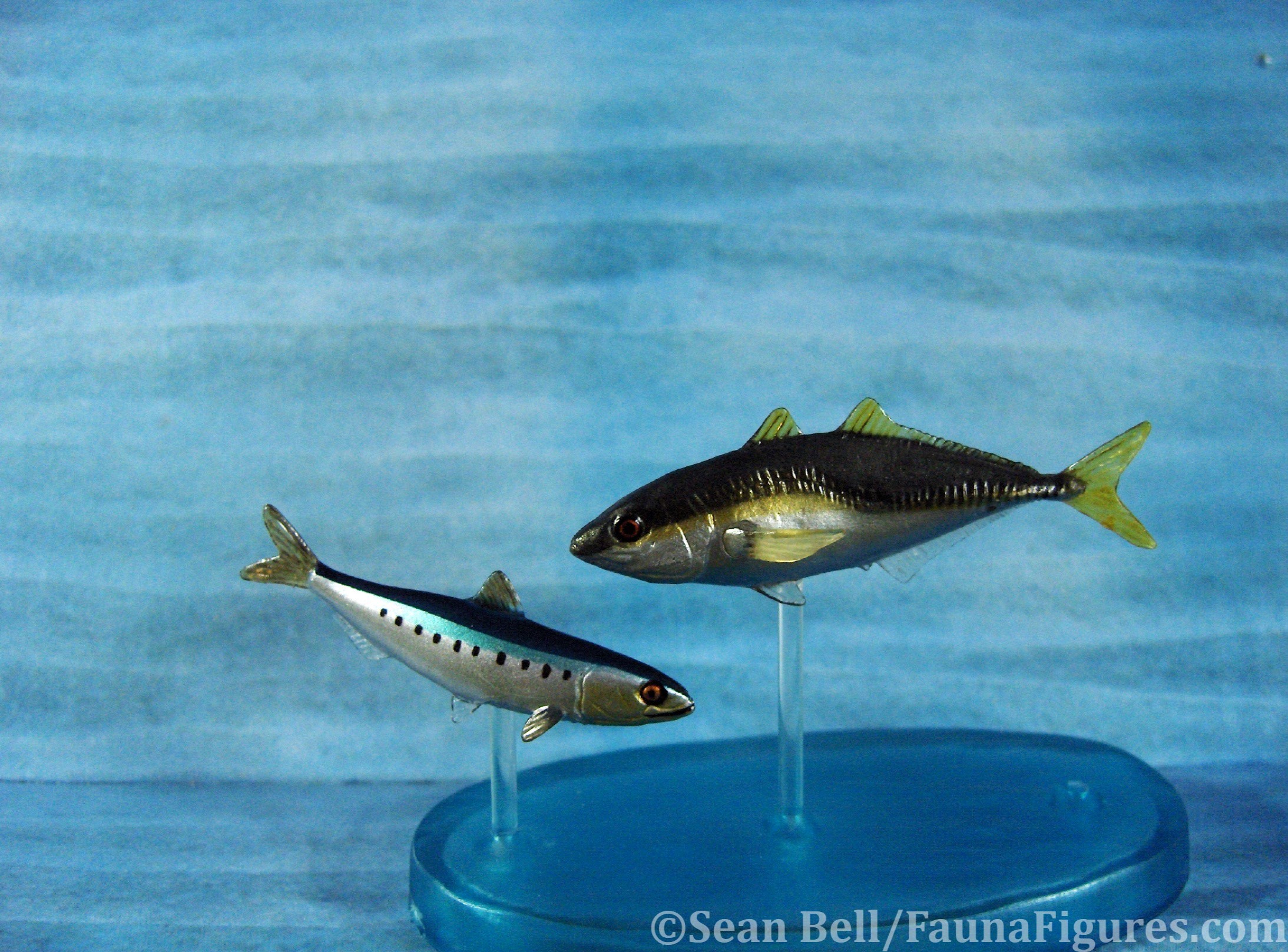
One thing worth mentioning about this original model, and set, is reflected in the photo above. When first released, there were two categories of bases–if the fish was a primarily benthic species (there is, for example, a flounder and scorpionfish) they had a specifically designed base. For all pelagic species, there were blue ovals with 3 peg holes. But there were not enough for all of the figures. As such, most needed to be combined with at least one other fish–and it would be up to the person placing them. In my case the marlin has its own, as well as the ocean sunfish (although it is with its jellyfish prey) and the large bluefin tuna. The rest needed to be placed together somehow. I suppose I could have tried to combine based on scale but I think I went for fit. Honestly, I could have even squeezed 3 fish per base (I tried to stick to 2 fish) and have spare bases for other things–there’s always a figure somewhere that could use a base! Now, each pelagic figure in the set has its own base, and there is a variety of them depending on the fish itself.
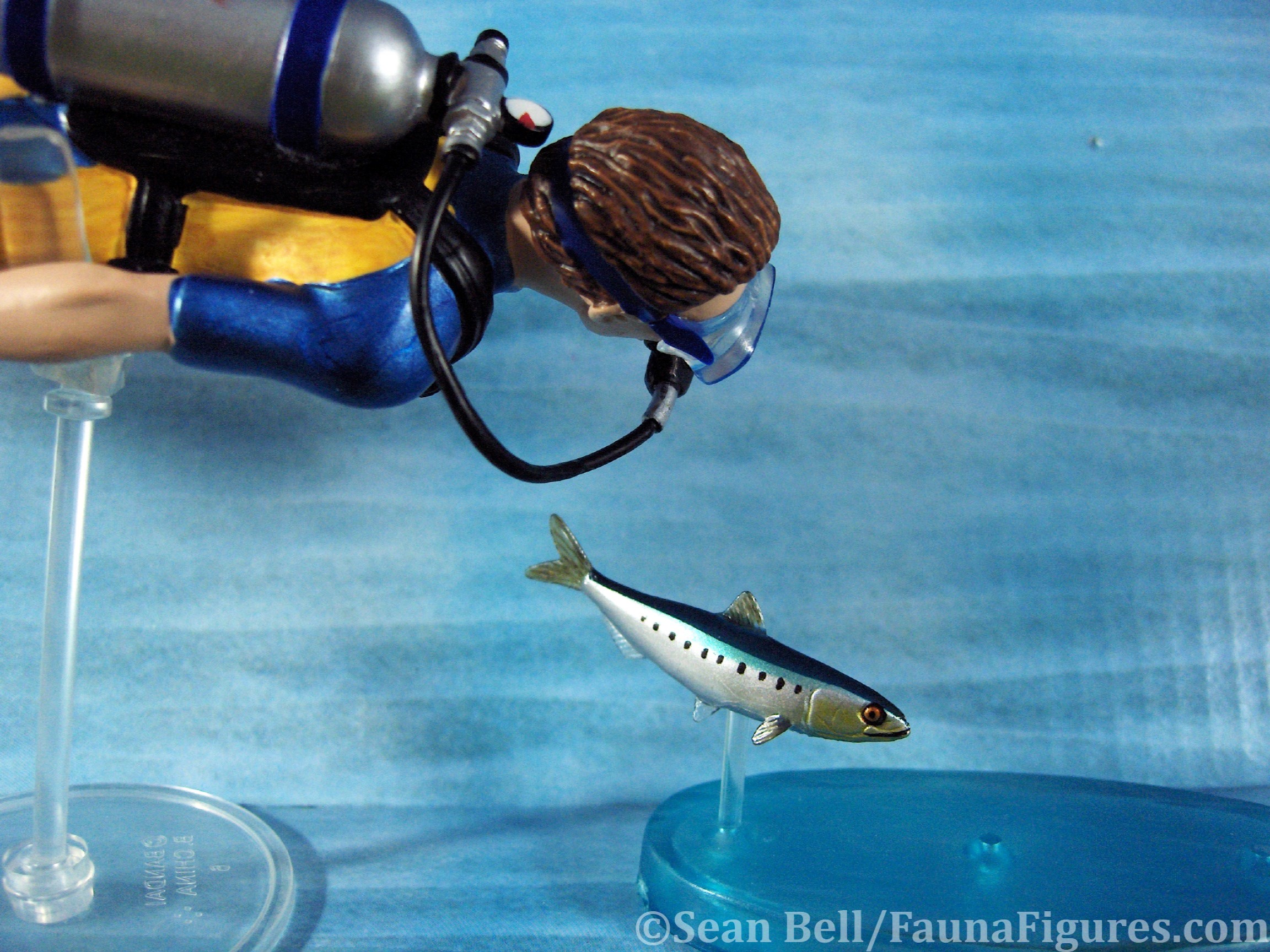
Honestly, someday this box will make a great Run the Set post (as would most of the Colorata sets) but I’m still beholden to my Random Number Generator, for now. I’ve already teased about enough of the other species to hopefully pique some curiosity about it. I would definitely suggest trying to get this set–either version, although the newer one is of course more readily available. In Japan. Or with help from someone. One thing though–some of these figures, like the pilchard, could probably be considered kid safe for older kids (if you’re so inclined…they are hard to get after all) but the acrylic pegs are not. And, again, some of the figures have easily lost bits. So maybe keep those out of reach. But still, have them around, they’re pretty great.





